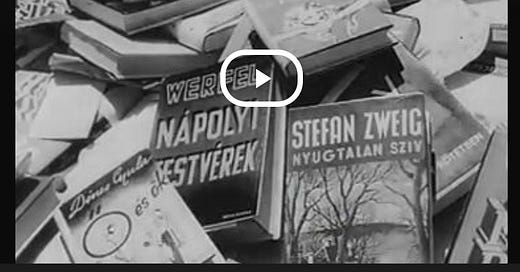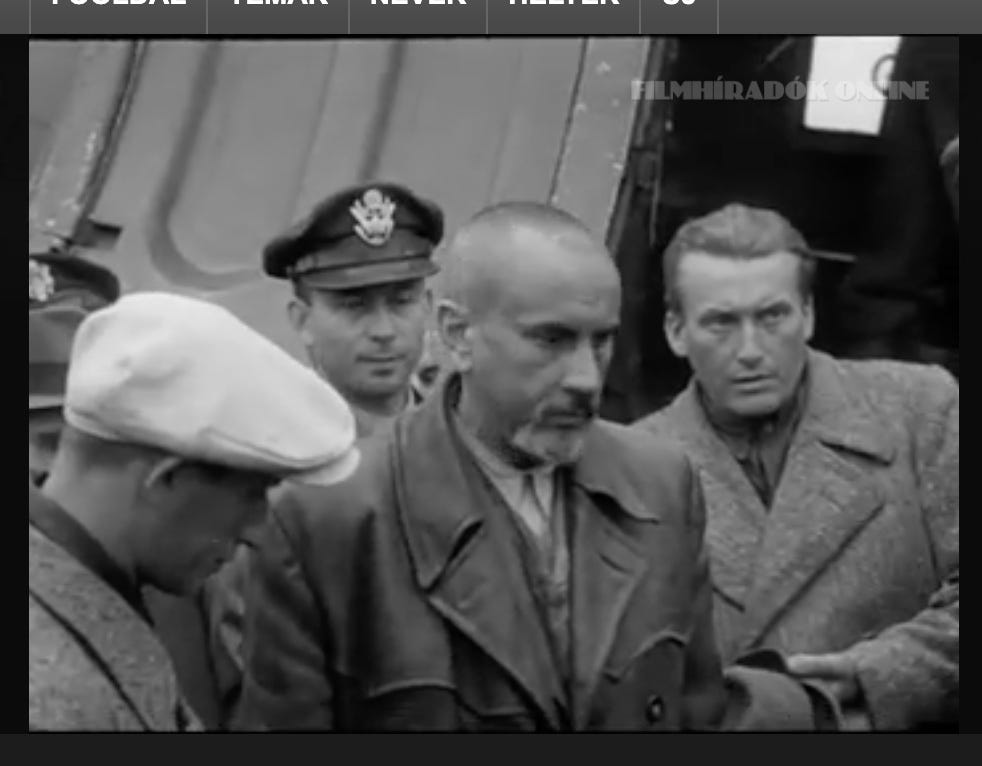On the same day that Opapa “netted” former Hungarian Prime Minister Béla Imrédy (his verb), he also arrested Mihály Kolesváry-Borcsa, a devoted anti-Semite with a long and successful (until 1945) political career in multiple Hungarian administrations.
Kolosváry-Borcsa’s anti-Semitism ran very deep. So did his roots in journalism and propaganda. In the 1920s, after serving in World War I, Kolesváry-Borcsa became a journalist at the Szózat, a right-wing nationalist newspaper that supported a Christian Hungarian state that would reclaim the Hungarian territory lost in the Treaty of Trianon. In the 1930s, as a supporter of Gyula Gömbös, he became a member of the press department of the Prime Minister’s office. When Béla Imrédy became Prime minister in 1938, Kolesváry-Borcsa was appointed head of the Press department. The following year, in 1939, he was appointed president of the National Hungarian Press Chamber. The same year, he published A zsidókérdés magyarországi irodalma, or “Hungarian literature on the Jewish Question,” which included a “list of Jewish writers.”
Kolesváry-Borcsa used his growing influence to spread anti-Semitic propaganda. For example, check out this video that shows him giving a speech in 1941 as the President of the Hungarian Press Chamber. Here is a rough translation of his speech. The translation is somewhat awkward, but I think it offers a window into his commitments:
We are Christians, we are Militarists, we are Patriots! The defenders of community morals and the sanctity of the family. This house is the house of the Hungarian Press, the nationalist concern of the Christians and the protection of our race…”
By 1944, Kolesváry-Borcsa’s star had continued to rise: under Prime Minister Döme Sztójay, he was appointed as State Secretary, a position that gave him tremendous power over not only newspapers, but also over radio, book publishing, and foreign news correspondence.
As part of his anti-Semitic campaign, Kolesváry-Borcsa arranged for the destruction — and filming (for propaganda purposes) — of nearly half a million books written by Jews. You can see the full video here. It’s a stunning and terrifying piece of propaganda. I’ve copied a screenshot below, in which you can clearly see a Hungarian translation of a Stefan Zweig novel:
Kolesváry-Borcsa was not just a propagandist. During the German occupation, Kolesváry-Borcsa was a “founding member of the Hungarian Institute for the Research of the Jewish Question,” which was established under the SS-Hauptsturmführer Ballensiefen.1 And as the head of the Press Chamber, he put together a list of 133 Jewish journalists and gave it to the Gestapo. The individuals on the list were then told to report for “labor service.” Most came voluntarily, afraid of repercussions if they did not comply. It was the wrong decision: those who showed up were transported to Auschwitz, while those who did not comply mostly survived the war.2
Kolesváry-Borcsa was, in other words, one of the most influential - and deadly - Hungarian propagandists. Opapa doesn’t record much about him in his May 1945 journal, but presumably, they shared a long drive from Kitzbühel to the jail in Salzburg in May of 1945.
A few months later, Kolesváry-Borcsa was extradited back to Budapest. I found a video that records the moment here. It also shows Kolesváry-Borcsa being interrogated by Péter Gábor. Here is a screenshot from the video:
Within a year, Kolesváry-Borcsa would be tried, convicted, and executed for war crimes. In one of my odder finds, I discovered that one of his last letters, written on death row, is currently for sale.
Kolesváry-Borcsa was tried together with Ferenc Kassai Schallmayer, the Arrow Cross propagandist who was the subject of my last post. He was executed in December 1946.
Randolph Braham, The politics of genocide: the Holocaust in Hungary, pp. 103-4
Randolph Braham, The politics of genocide: the Holocaust in Hungary, pp. 124-5.





